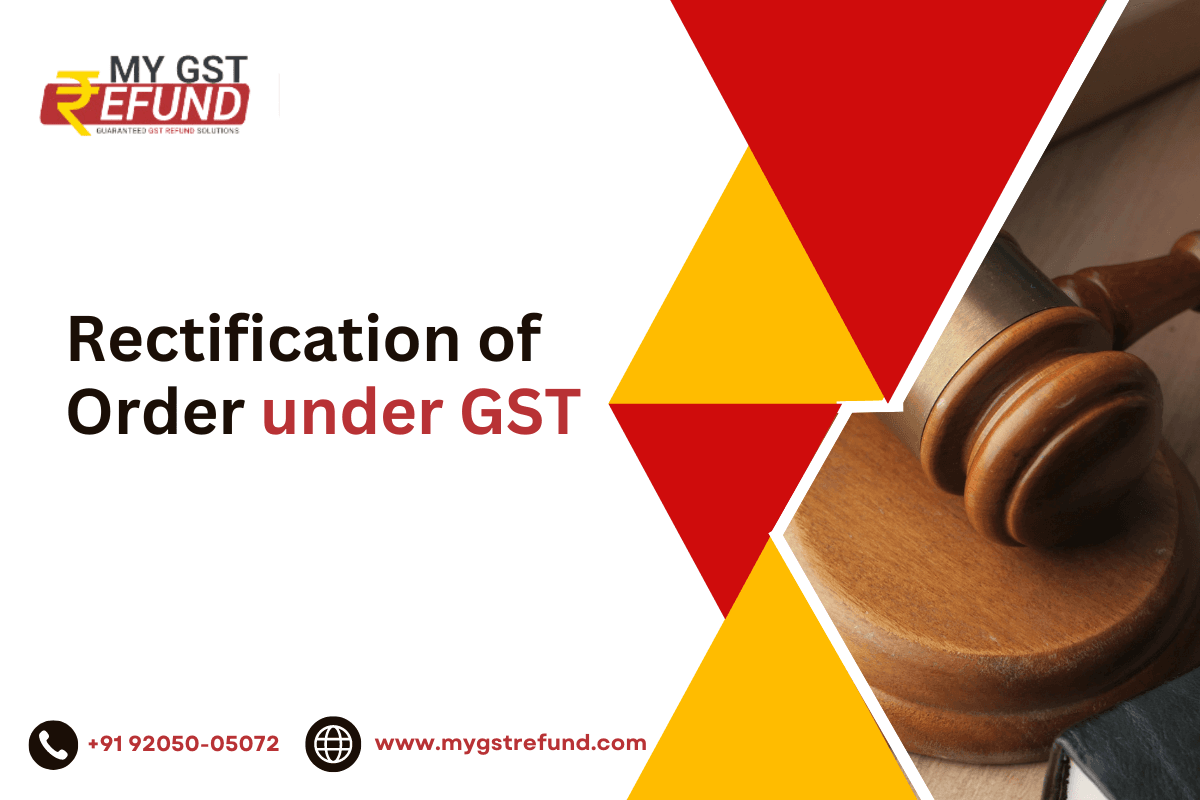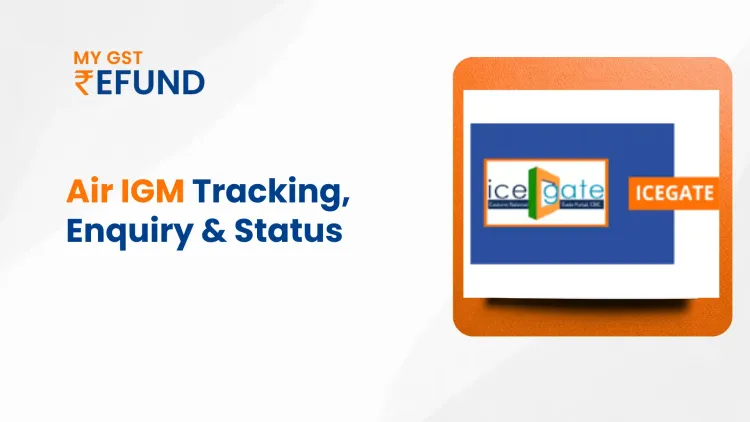Rectification of Order under GST
Published on: Mon Feb 05 2024Bio (Reveal/Hide)

Rectification of Order under GST Law
The introduction of the GST in 2017 in replacement of the erstwhile Indirect Tax Laws such as VAT, Excise, Service Tax, etc. has had a radical effect on every Taxpayer including Business Owners. The CGST Act, 2017 (“The Act”) has undergone a cornucopia of changes and amendments within its provisions. Similar to the Erstwhile Indirect Tax Laws GST is also a Procedure-oriented substantive law that prescribes provisions in relation to levy of tax as well as provisions for demand and penalties. “Proper Officers” are empowered under the CGST Act, 2017 to issue notices and orders to the taxpayers. Under certain cases the proper officer while issuing any notice or order commits an inadvertent error that is apparent on the face of the record. Such an error may cause adversities to either the Tax Authorities or the Taxpayer, however, the GST Law provides for a special provision of rectification of the notice or order issued in cases of errors that are apparent on the face of the record. This article delves into the intricacies of the provisions in relation to the Rectification of Order under the CGST Act, 2017.
The provisions for Rectification are provided under Section 161 of the Act, 2017. Section 161 begins with a Non-obstante clause i.e., overriding all the provisions of the act, prescribing that any ‘decision’, ‘order’, ‘notice’, certificate or ‘any other document’ which is passed or issued by any authority under the act are eligible for rectification. However, Rectification of Orders can only be made in regard to errors that are apparent on the face of the record.
The application for Rectification of Order can be placed on record by the ‘authority who has passed that order’, ‘by any officer appointed under the act’, or by ‘the affected person’ within a time span of three months from the date of issue of any of the above documents.
An order can only be rectified up to a period of six months from the date of issue of any of the above documents, however, the period of six months does not apply in cases where the nature of rectification is merely in the nature of correction of a clerical or arithmetical error arising out of any ‘accidental slip’ or ‘omission’.
It is also important to highlight that if such rectification results in adversely affecting any person, the principles of natural justice shall have to be compulsorily followed by the authority who is in the position of carrying out such rectification. Such provision in regards to the applicability of Principles of natural justice was statutorily non-existent in the erstwhile Indirect Tax Statutes and has been enacted only via the CGST Act, 2017.
Issues
- What is the meaning of an ‘error apparent on the face of the record’?
- What is the due procedure for filing an application for Rectification in cases where such an
error is identified? - What is the timeline to file an application for filing an Application of Rectification?
- What are the principles of natural justice as prescribed under Section 161?
Analysis
Meaning of error apparent on the face of the record
The phrase ‘error apparent on the face of the record’ has not been defined or described under the act and nor has been clarified by means of any circular by the Lawmaker. However, the dictionary meaning of the phrase simply means an “obvious mistake”, “errors which are patent”, or “visible and evident on the record”. It is also a well-settled position of law that errors which are ‘debatable’, arguable points/facts’, ‘questions involving interpretation of law’, ‘elaborate arguments which require further evidence to be substantiated’ are not considered to be errors which are apparent on the face of the record.
The Supreme Court has interpreted the above as “an error which is not self-evident and has to be directed by a process of reasoning, can hardly be said to be an error apparent on the face of record…”
An inference as to what may qualify as an error apparent on the face of the record can be drawn from the above judgment of the Apex Court that any error which needs to be reasoned and involves the application of mind cannot be said to be an error apparent on the record.
General Examples of Errors apparent on the face of the record are;
- Failure to consider a document/submission/argument during a proceeding
- Failure to consider a provision of law
Procedure for filing an application for Rectification
The scope of rectification is not limited to orders; it also encompasses decisions, certificates, notices, and other documents issued under the Act, provided there is an error apparent on the face of the record. Unlike the erstwhile indirect tax law, which only allowed the rectification of orders, the CGST Act brought a significant change by expanding the scope of rectification. Both parties involved have the right to request the initiation of rectification proceedings, contingent upon meeting the essential condition of the presence of an apparent error in the order or related documents.
As per the current provisions of the GST law a rectification application can be filed against an order before the authority which has passed the order through the GSTN Portal against the order issued. The said officer shall have to electronically pass such order in FORM DRC-08 as per the provisions of Rule 142(7) of the CGST Rules, 2017.
However, the act and the CGST Rules, 2017 do not define or provide for any set procedure to file a rectification application in the cases of notices or certificates issued by proper officers, such officers can, however, be approached to with a physical application u/s 161 of the Act.
Timeline to File an application for Rectification
Taxable individuals / Affected Persons have a precise window of three months from the date of the document, order, notice, and any certificate passed by a proper officer to file for rectification. However, in scenarios wherein the rectifications are confined to only minor clerical errors resulting from inadvertent mistakes, there is no timeline for filing for rectification.
Whereas, contrastingly Section 161 of the Act does not provide for any specific timeframe for the Authorities to submit their report and file for a rectification and thus the officers appointed under the act have no temporal constraints so as to approach the Original authority for Rectification.
Section 161 further prescribes that a rectification order should be passed within six months from the date of such order/notice/certificate or any other document.
Applicability of Principles of Natural Justice
The principle of “Natural Justice” is a significant concept derived from Administrative law and is considered to be a branch of public law which means “Justice that is simple and elementary, as distinct from the justice that is complex, sophisticated and technical”.
These principles have not been encoded or prescribed anywhere in the law but are derived from various judicial pronouncements over a period of time. The Apex Court in numerous cases has held that the most settled and basic principle is “Audi Alteram Partem” i.e., no one should be condemned unheard.
The above principle of “Audi Alteram Partem” is precisely the principle on which provisions of Section 161 are governed. Section 161 specifically prescribes that if any rectification affects any person adversely, principles of natural justice must be followed i.e., in general parlance an inference can be drawn that no adverse order in lieu of rectification must be passed without giving the affected party a chance to be heard and present their case against the given facts and circumstances of that rectification.
Such provision was not present in the erstwhile VAT regime and has been statutorily included under the garb of the CGST Act, 2017 in order to ensure the rights of taxpayers are protected.
In the recent case of Spy Agro Industries Limited vs Union of India, the Hon’ble Andhra Pradesh High Court upheld that Section 161 of the principles of Natural Justice must be followed in a case where such rectification is adverse in nature and condemned the act of the GST Authorities of passing an order without providing an opportunity of being heard to the taxpayer. Further, the Court remanded back the matter before the authorities and directed them to conduct fresh proceedings and pass an order in accordance with the provisions of the GST Law.
Conclusion and Way Forward
The author of the above article has strived to briefly analyse the provision and procedure prescribed for rectification prescribed under the CGST Act, 2017. The author would further like to culminate that a taxpayer can also exercise the option of rectification u/s 161 of the Act against an order passed against him before proceeding to file an appeal before the Appellate Authorities in cases where there is an error apparent on the record.
Despite rectification being an old concept the GST Authorities presently are negligent towards passing an order for rectification in cases of miniscule errors which cause the taxpayers great burden and additional compliance and hinder the ease of doing business.
Related Posts






